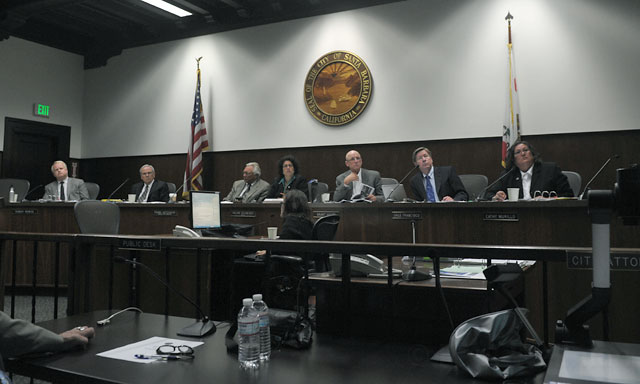Sales Tax Increase Appears Dead on Arrival
City's Proposed Half-Cent Bump Probably Won't Make November Ballot

A half-cent sales tax increase that would have generated $9 million a year for the City of Santa Barbara may not technically qualify as “dead on arrival,” but it appears close. “It sure looks like it,” said Mayor Helene Schneider shortly after a special meeting of the City Council to discuss the possible tax bump.
For the council to place the matter before voters this November, five members of the council must vote to do so. By the end of this Wednesday’s special meeting, it appeared the plan only had four solid votes. Councilmember Dale Francisco announced he couldn’t support placing the measure on the ballot until the council had demonstrated sufficient fiscal restraint during “good times.” Councilmember Frank Hotchkiss — running for re-election this fall — had made it clear previously he would not support it. And Councilmember Randy Rowse expressed great skepticism about giving the council a blank check worth $9 million a year. Rowse did keep the possibility open, however, of letting voters decide pending the results of a city-sponsored survey on the matter.
Schneider, a strong supporter of the tax ballot idea, said it came as a surprise that the measure required a five-vote supermajority. Until last Wednesday’s meeting, she and the rest of the council had been under the impression a simple four-vote majority was sufficient.
Where councilmembers might disagree on the wisdom of a tax hike — especially in the wake of a recovery seen by many as fragile — there’s consensus that City Hall has a boatload of unfunded capital needs worth hundreds of millions of dollars. According to City Administrator Jim Armstrong, the value of these unfunded needs could be as high as $400 million and as low as $200 million. He stressed that City Hall could manage without the new tax revenues without making further cuts.
Sales taxes are on the rise as are bed taxes; property taxes, however, remain flat. Over the past six years, 90 positions have been cut from the City Hall payroll in response to chronic budget shortfalls. But without the new revenues, Armstrong stressed that big ticket items — like a new police station or a refurbished Cabrillo Bath House, long identified as high priority improvements — cannot be paid for. And without the new tax revenues, he added, hundreds of millions of dollars in road repairs and slurry sealing will be delayed or not done. The quality of streets will decline, and later efforts to bring them up to snuff will prove much costlier than if they been done sooner.
Adding to the pinch is the $45 million in revenues City Hall has had to make do without because the State Legislature — coupled with the California Supreme Court — abolished redevelopment agencies throughout California.
Propelling interest in the sales tax measure was the success other California cities have had passing them. Of all the sales tax increases proposed last year, 79 percent were approved by voters. Even Santa Maria — known for its conservative voters and even more conservative politicians — passed a sales tax increase last June. But even with such numbers, success was hardly preordained. Many on the left end of the political spectrum oppose sales tax increases because they have disproportionate impact on low income residents. Voters on the right side of the aisle tend to reject tax increases out of hand.
Schneider had floated a package of ballot initiatives last year in which she linked a tax increase to pension reform and to school funding. Although Schneider said she collected enough votes to qualify for the ballot, she withdrew the measure because of lack of political support from crucial allies.



